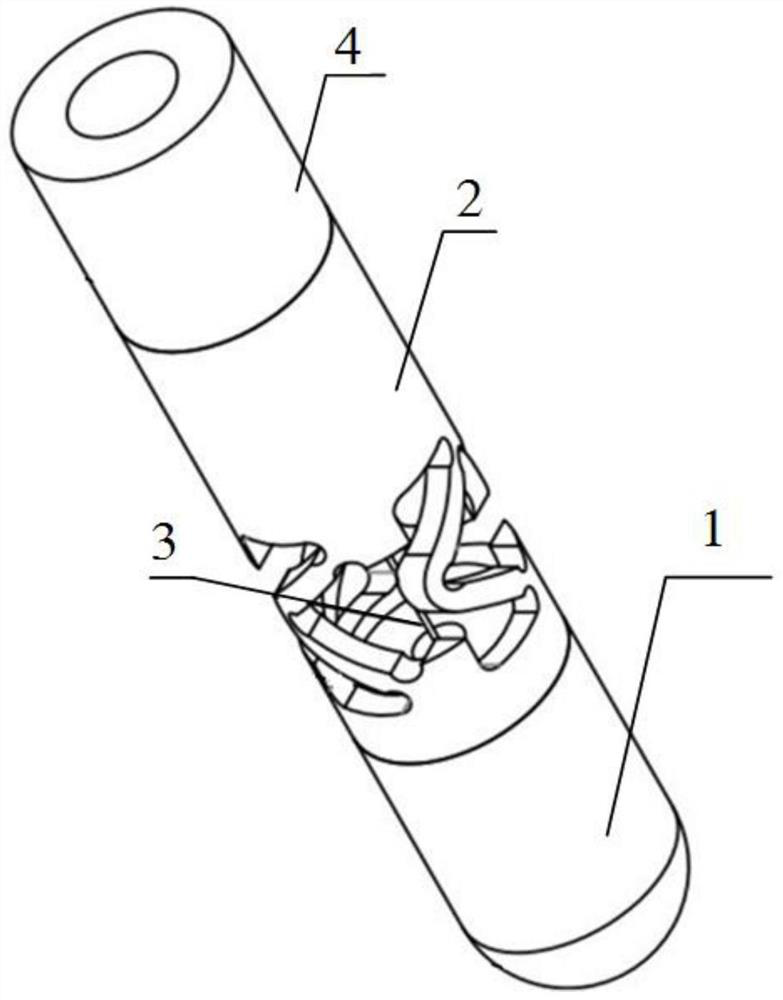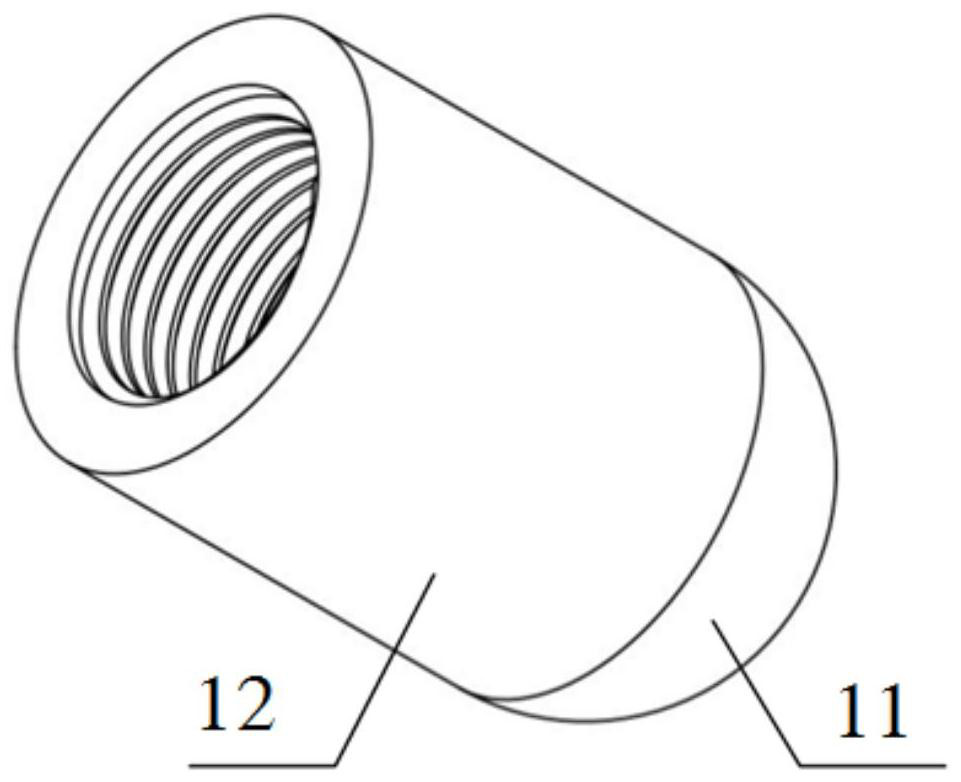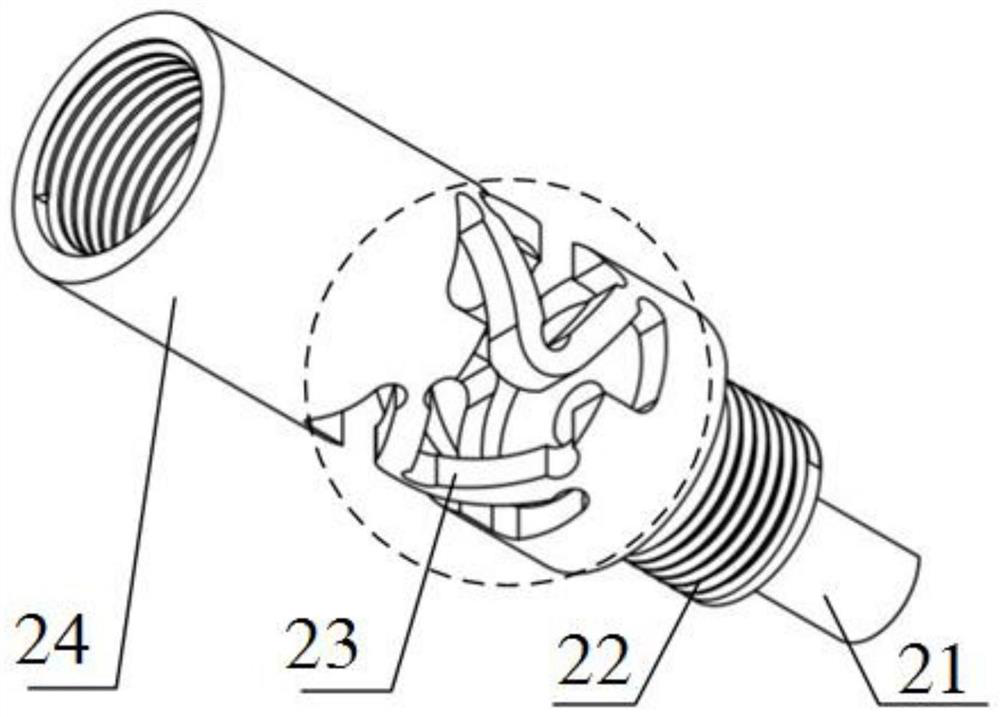One-dimensional palpation force sensor based on fiber Bragg grating
An optical fiber Bragg and force sensor technology, which is applied in the direction of force measurement, instrument, and force measurement by measuring the change of optical properties of materials when they are stressed, which can solve the problem of difficult to achieve accuracy and repeatability, difficult clinical application, and limited resolution. and other problems, to achieve high sensitivity and linearity, high resolution, and improve the effect of output signals
- Summary
- Abstract
- Description
- Claims
- Application Information
AI Technical Summary
Problems solved by technology
Method used
Image
Examples
Embodiment 1
[0034] Example 1: Such as figure 1 As shown, a one-dimensional palpal sensor based on the fiber Bragg grating is mainly composed of a contact member 1, a force sensitive flexible member 2, a fiber Bragg grating 3, and a support member 4; wherein: the contact member 1, force The sensitive flexible member 2 and the support member 4 are sequentially connected in order; specifically:
[0035] like figure 2 As shown, the contact member 1 is composed of a contact head 11 and a first hollow cylinder 12 connected to the contact head 11;
[0036] like image 3As shown, the force sensitive flexible member 2 includes a first fiber fixing portion 21, a rigid SARRUS mechanism 23 and a second hollow cylinder 24, and a second hollow cylinder 24; wherein the first fiber fixing portion 21 is The end of the flexible SARRUS mechanism 23; the flexible SARRUS mechanism 23 includes four flexible hinges that are uniformly arranged at 90 ° in the circumferential direction, the second hollow cylinder 24 to...
PUM
 Login to View More
Login to View More Abstract
Description
Claims
Application Information
 Login to View More
Login to View More - R&D
- Intellectual Property
- Life Sciences
- Materials
- Tech Scout
- Unparalleled Data Quality
- Higher Quality Content
- 60% Fewer Hallucinations
Browse by: Latest US Patents, China's latest patents, Technical Efficacy Thesaurus, Application Domain, Technology Topic, Popular Technical Reports.
© 2025 PatSnap. All rights reserved.Legal|Privacy policy|Modern Slavery Act Transparency Statement|Sitemap|About US| Contact US: help@patsnap.com



